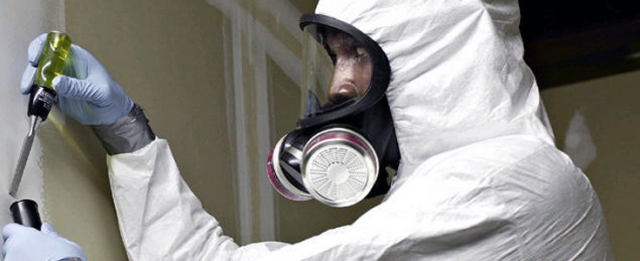If you’re the owner or manager of a commercial or public property then you have a legal duty to make sure that the occupants of the building are protected from the dangers of asbestos.
Asbestos surveys help identify any asbestos in a building, along with regulations about to how to manage the hazards involved with asbestos. So read on for advice and information about commissioning an asbestos survey and how to safely manage it.
What is Asbestos?
Asbestos is a natural fibrous mineral substance that was used as a very common building material from the 1950’s onwards. The chief benefits of using asbestos as a building material included the fact that the material is fire and weather resistant, doesn’t rot, and has excellent insulation properties.
However, asbestos is a killer. Tiny fibres released from the substance are breathed into the lungs, causing fatal respiratory and lung disease years down the line. For this reason, any existing asbestos in buildings must be carefully managed to avoid anyone being exposed to the lethal effects of asbestos fibres.
Where is Asbestos Found?
Asbestos was prohibited from use in 1999, so is most likely to be found in any building built before this time. However, it can be very difficult to identify as it was used so widely in many types of areas and building materials. Ceiling tiles, sprayed coatings, artex, roofing tiles, insulation filling and lagging are just a few of the main materials that asbestos can be found in. It could be almost anywhere.
Asbestos Legal Obligations
The Control of Asbestos Regulations 2006 came into force on 13th November 2006 and the duty to manage asbestos is a legal requirement under the Control of Asbestos Regulations Act 2012. There is no actual legal requirement to undertake an asbestos survey, but the majority of business owners and property managers choose to do so, to properly identify any asbestos dangers and fulfil their duty to manage it.
Asbestos Surveys
There are two types of survey that can be carried out. The two types are a Management Asbestos Survey, and a Refurbishment or Demolition Survey. The first is designed to locate and identify the presence of asbestos, and the second is to locate any asbestos prior to major renovation or demolition work begins.
An asbestos management survey will locate the asbestos, identify the type of asbestos, and describe the condition of the asbestos. The surveyor then puts the information in a report for inclusion in the asbestos risk register.
When commissioning an asbestos survey, always be sure that the surveyors are conducted by P402 / S301 trained surveyors, and that they analyse any asbestos samples using UKAS approved laboratories.
A good asbestos survey carried out by asbestos surveyors such as http://www.artisansurveyors.co.uk/ will include annotated CAD plans for clear identification of where the asbestos is located, and the type of detailed and concise information that fulfils your duty to safely manage asbestos.
If asbestos must be removed, then you will also need to ensure that you use a regulated asbestos waste carrier service.
By Harry Price
Harry Price is an entrepreneur, guest blogger and personal trainer. He travels all around the world and enjoys visiting cultural sites whenever possible.



